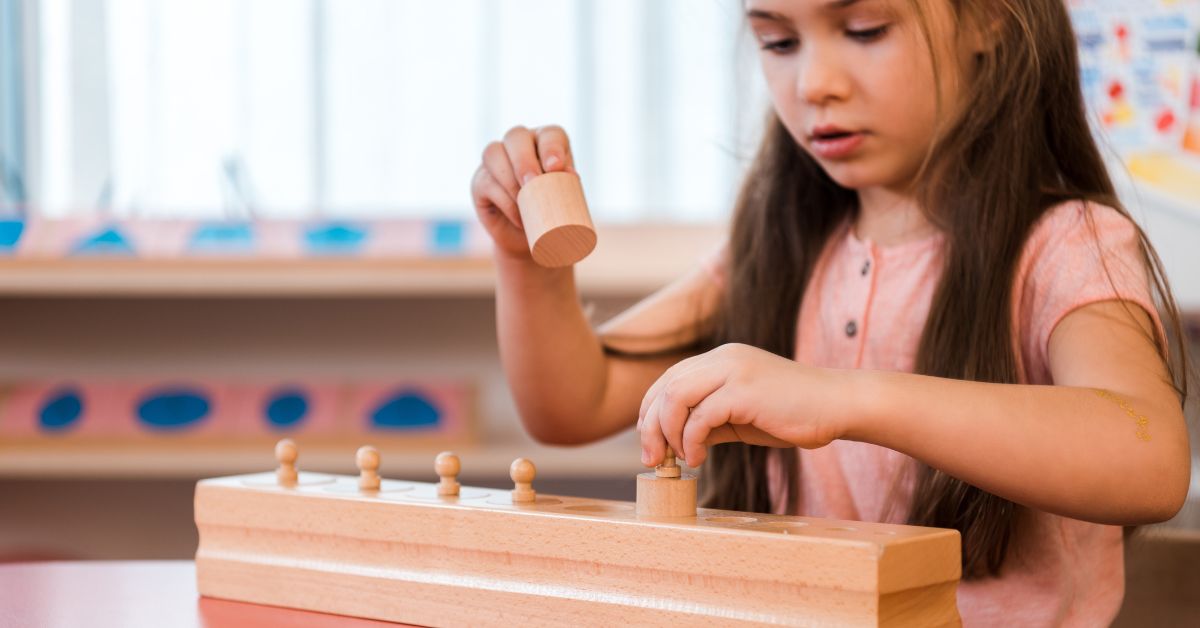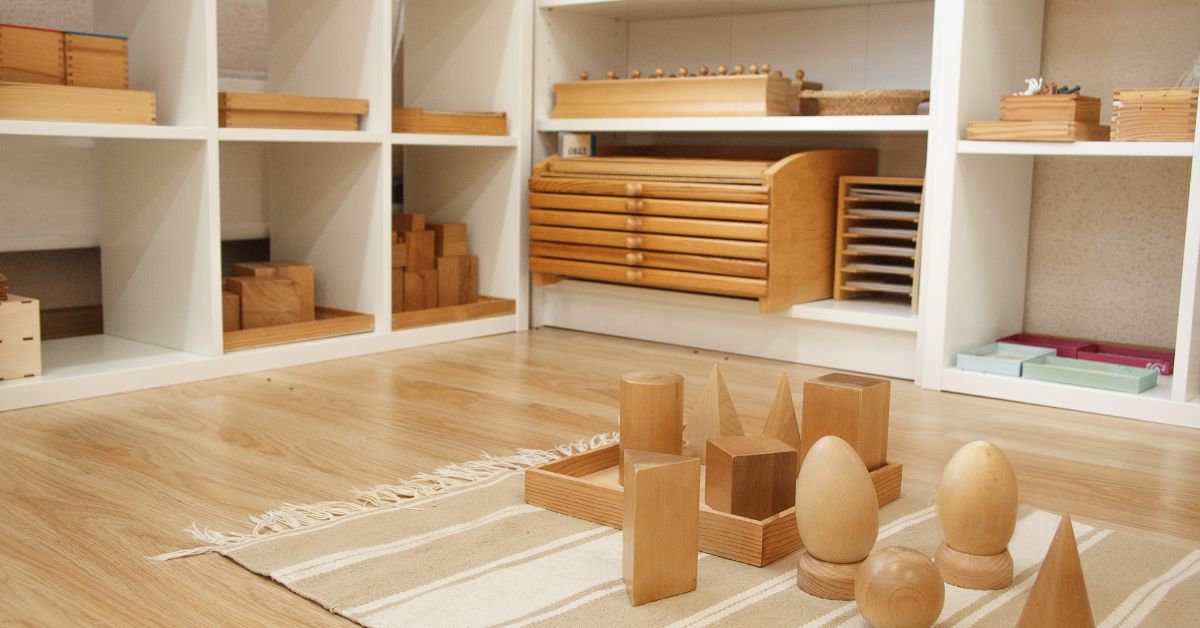Homeschooling offers a unique opportunity to tailor education to your family’s values, lifestyle, and needs. For parents drawn to creativity, imagination, and a focus on holistic learning, the Waldorf education philosophy provides inspiring guidance. Rooted in nurturing a child’s growth through artistry, nature, and rhythm, Waldorf education principles emphasize a natural learning environment that integrates mind, body, and spirit.
Using these principles in your homeschool allows for a flexible and intentional setup that supports both education and personal connection. Whether you’re new to Waldorf or already incorporating elements, this blog will provide you with practical Waldorf homeschool ideas to create an inviting and enriching environment your kids will love.
Designing a Waldorf-Friendly Space
The foundation of any Waldorf-inspired homeschool is the environment. A warm, inviting space filled with natural elements can make learning feel like an extension of life, rather than a separate task. According to educational studies, harmonious learning environments can lead to stronger concentration and better academic performance.
Here are some natural learning environment tips to design the perfect space for your family:
- Use natural materials: Choose wooden tables, wool throws, and cotton or linen fabrics. These materials connect children to the organic world around them and create a calming atmosphere.
- Declutter for creativity: Too many stimuli can overwhelm a child’s senses. Declutter regularly, keeping only the educational tools and toys that spark imagination.
- Create purposeful zones: Designate corners for different activities, such as a cozy reading nook or a tabletop for art projects.
A clean, comfortable, and aesthetically pleasing space makes learning enjoyable and sets the tone for creativity and focus.
Incorporating Rhythm and Routine
Rhythm is a key aspect of Waldorf education, as it mirrors the natural cycles of daily life and the seasons. Implementing predictable rhythms in your homeschool can foster security and balance for your children. A study by the American Academy of Pediatrics highlights that structured routines help children feel more confident and manage transitions better.
Here’s how to bring rhythm and routine into your day:
- Morning flow: Start the day with a grounding activity, like singing a song or a short stretching exercise.
- Balanced schedule: Alternate focused academic periods with creative breaks, physical movement, and relaxation.
- Seasonal cycles: Incorporate festivals or activities that align with the changing seasons, such as making leaf crafts in the fall or planting flowers in the spring.
For example, your daily rhythm might look like this:
- 8 a.m.: Breakfast and morning chores
- 9 a.m.: Main lesson (math, reading, or writing)
- 10 a.m.: Creative or physical activity (crafts or outdoor play)
- 11 a.m.: Snack and storytime
- Noon+: Free play followed by a family meal
This structure ensures that your homeschool stays both productive and joyful, without overwhelming your kids or yourself.

Prioritizing Arts and Handwork
Arts and handwork are integral components of a Waldorf-inspired education. These activities not only nurture creativity but also develop problem-solving skills and fine motor coordination. Research shows that hands-on learning increases student engagement, and Waldorf’s focus on the arts perfectly aligns with this philosophy.
Here are some activities to incorporate into your homeschool:
- Watercolor painting: Start with simple wet-on-wet techniques to explore color blending.
- Knitting or crocheting: These crafts build patience and focus while creating something tangible.
- Woodworking: Simple tools and projects, like carving wooden figurines, are great for older kids.
- Felting: Soft wool and bright dyes make felting a relaxing and beautiful art form.
Set aside specific days or times for arts and crafts, and showcase your child’s projects around your homeschool space to encourage their confidence and pride in their work.
Fostering a Connection with Nature
Nature and Waldorf education go hand-in-hand. Spending time outdoors helps children develop a sense of wonder and learn to respect the natural world. Plus, studies show that just two hours of time in nature each week can significantly improve mood and focus.
To incorporate nature into your homeschool, try these ideas:
- Outdoor learning: Take your lessons outside when possible. Reading under a tree or practicing simple math during a nature walk introduces new energy and inspiration.
- Gardening: Growing flowers, vegetables, or herbs teaches life cycles and responsibility.
- Foraging: If seasonally appropriate, explore local trails and forage for pinecones, leaves, or wildflowers for seasonal crafts.
- Nature tables: Dedicate a space indoors to display natural treasures your children find, like colorful leaves or interesting rocks. Update this table as the seasons change.
These activities support children’s physical development while fostering curiosity about the environment. Additionally, they offer an ideal blend of learning and play, rooted in Waldorf education principles.
Using Storytelling and Imaginative Teaching
One of the most charming aspects of Waldorf homeschool ideas is the emphasis on rich storytelling and imagination. Narratives are a captivating way to teach lessons while engaging your child’s sense of wonder.
Here are ways to bring storytelling into your homeschool:
- Oral tales: Share fables, myths, or original stories aloud. Create a soothing, attentive environment during storytelling by dimming lights or lighting a candle.
- Character-driven lessons: Use imaginative play to teach concepts—for example, have math problems solved by a “brave knight” or explored through a “fairy quest.
- Dramatic retellings: Encourage your children to act out parts of a story, using puppets, dress-up clothes, or even handmade props.
By making storytelling a regular feature of your homeschool, you’ll cultivate a love of learning that is fun, memorable, and deeply aligned with Waldorf education principles.
The Joy of a Waldorf-Inspired Homeschool
Creating a Waldorf-inspired homeschooling environment offers more than just academic benefits. It creates a life-enriching space for connection, creativity, and personal growth—for both you and your children. With its emphasis on rhythm, natural elements, and imagination, the Waldorf approach transforms education into a harmonious and joyful experience.
Start with small changes, such as decluttering your homeschool space or adding daily routines. Gradually introduce arts, natural elements, and outdoor learning to build a foundation that supports your family’s unique needs. Most importantly, trust the process and adjust according to what works best for your household.
At Dropkick Homeschool Resource, we’re here to support your homeschooling journey every step of the way. Visit our website for more Waldorf homeschool ideas and resources to create a vibrant and meaningful education for your family.



